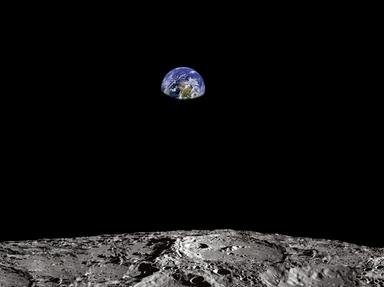Quiz Answer Key and Fun Facts
1. An oxygen tank ruptured on the Apollo 13, leading to abandonment of the planned lunar landing and a difficult return to Earth. What caused the rupture?
2. In 1976 the Soviet manned spacecraft Soyuz 23 landed on Lake Tengiz on its return to Earth. The cosmonauts were not recovered for nine hours. Why?
3. On its sixth mission (STS-9) in 1983, there was an explosion on the Space Shuttle Columbia 15 minutes after it had safely landed. The fuel leak which led to the explosion probably started in space. Why did the explosion not happen in space?
4. Vostok 1 in 1961 was the first manned space flight, carrying Yuri Gagarin. What problem arose during the descent?
5. On the International Space Station in 2013, astronaut Luca Parmitano had to terminate a spacewalk. What unusual problem did he encounter?
6. An early Soviet space mission, the Voskhod 2, featured the first space walk in 1965. What problem caused the cosmonaut issues when trying to get back in the airlock?
7. What natural occurrence caused problems for Apollo 12 in 1969 before it achieved orbit?
8. In 1983 the Soyuz 7K-ST No. 16L (sometimes called the Soyuz T-10a) was due to go up to the Salyut 7 space station where the Soyuz 9 crew were ensconced. Unfortunately, about 90 seconds before liftoff the rocket was engulfed in flames. How were the crew saved?
9. In 1975 the Soyuz 18a mission successfully left the ground. However, about five minutes into the flight the second-stage booster failed to separate properly. What happened next?
10. Liberty Bell 7 (or Mercury Redstone 4) successfully flew its mission in 1961 and splashed down in the Atlantic. Its astronaut Gus Grissom was involved in a controversy which saw the space craft sink during recovery. What happened?
Source: Author
suomy
This quiz was reviewed by FunTrivia editor
bloomsby before going online.
Any errors found in FunTrivia content are routinely corrected through our feedback system.
